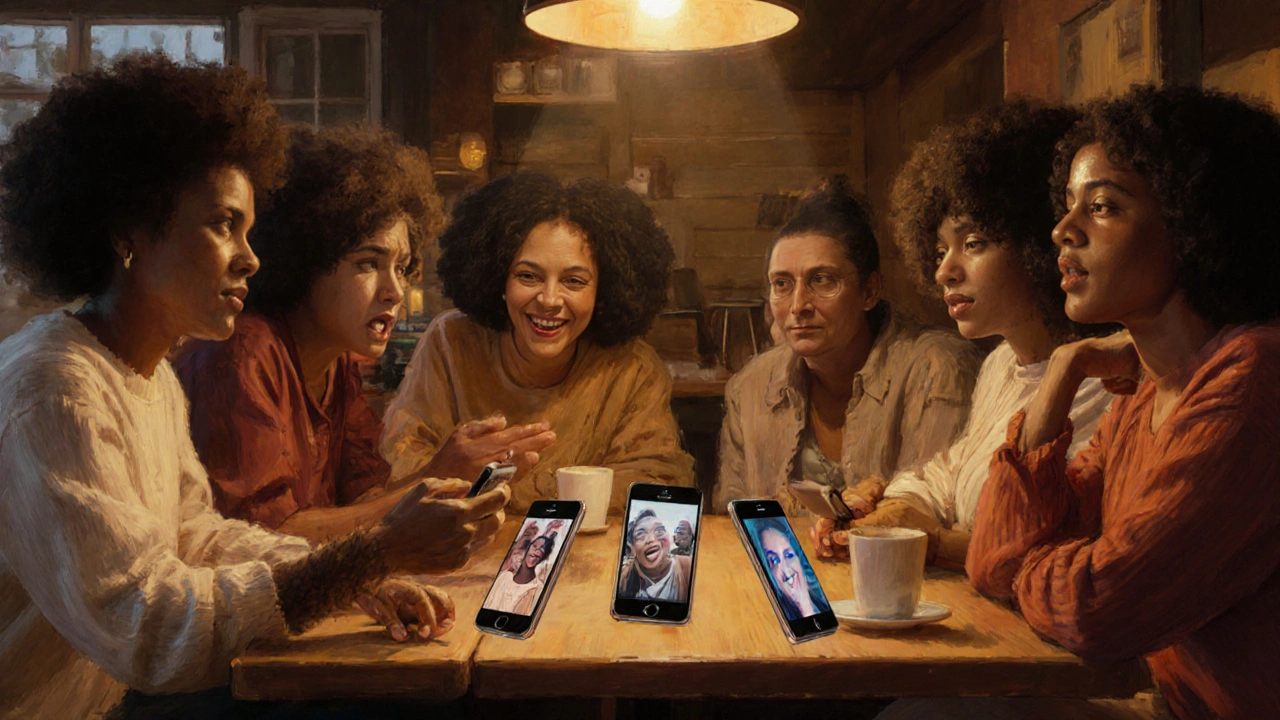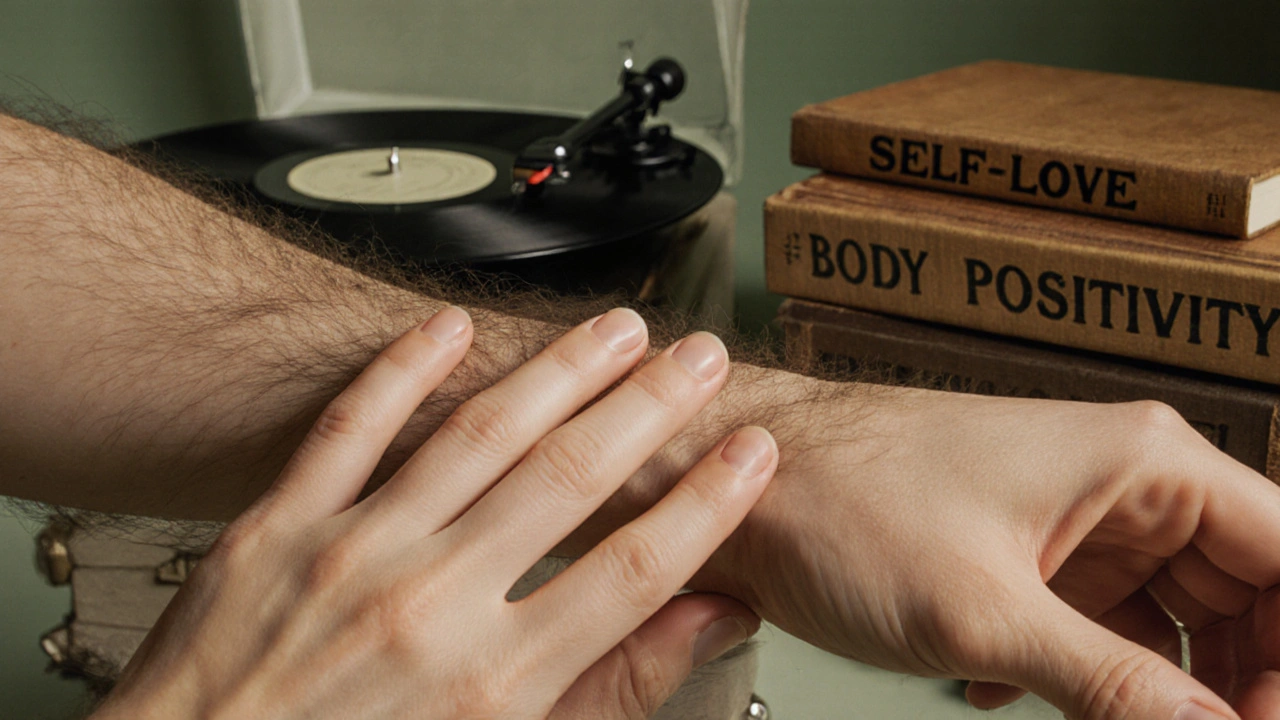Living with excessive hairiness - also known as hypertrichosis - can feel like a constant negotiation between what your skin does and what society expects. It’s not just a question of aesthetics; it’s a deep‑seated part of how you see yourself in a world that glorifies sleek, hair‑free bodies. This article walks you through the science, the cultural pressures, and, most importantly, practical ways to own your look and feel good in your skin.
Quick Takeaways
- Excessive hair growth often stems from hormonal or genetic factors, not personal neglect.
- Media standards shape body image, but you can rewire those messages.
- Self‑acceptance and mindful grooming are both valid paths to confidence.
- There are safe, evidence‑based hair removal options if you choose them.
- Community support can turn a feeling of isolation into empowerment.
What Causes Excessive Hairiness?
First, let’s demystify the condition. Hypertrichosis is a rare medical condition where hair grows excessively on parts of the body where it’s usually fine or absent. It can be congenital (present at birth) or acquired later in life due to hormonal shifts, certain medications, or endocrine disorders like polycystic ovary syndrome (PCOS). A 2023 endocrinology review found that up to 8% of women with PCOS experience noticeable facial hair growth, a major driver behind many people’s concerns.
Understanding the root cause helps you choose the right response. If a hormonal imbalance is at play, a visit to a dermatologist or endocrinologist can offer treatment options that target the source, not just the symptoms.
How Society Shapes Body Image
Enter body image the mental picture and feelings you have about your own appearance. From runway shows to Instagram filters, mainstream media repeatedly showcases hairless skin as the beauty ideal. A 2022 cultural study showed that 73% of women felt pressure to remove body hair to fit into social or professional settings.
But these standards are not universal. In many Pacific cultures, for example, natural body hair is celebrated as a sign of maturity and strength. Recognizing that beauty norms are culturally constructed opens space to question them.
The Psychological Toll
When your body doesn’t match the polished image you see online, self‑esteem can dip quickly. Mental health research links body dissatisfaction with anxiety, depression, and social avoidance. The key is to interrupt the negative feedback loop. Instead of scrolling through curated photos that reinforce the “hair‑free” narrative, curate a feed that celebrates diverse bodies.
One practical trick: write down three things you appreciate about your body each morning-focus on function (like the way your skin protects you) rather than appearance. Over a few weeks, many people report a measurable lift in mood.

Mindset Shifts for Self‑Acceptance
Self‑acceptance isn’t a switch you flip; it’s a habit you build. Here are three proven strategies:
- Reframe the narrative. Instead of seeing hair as “flaw,” describe it as “natural” or “unique.” Language shapes perception.
- Practice body‑positive exposure. Spend five minutes a day looking at yourself in the mirror without judgment. Notice texture, movement, and the way hair catches light.
- Set realistic goals. If you decide to groom, choose an approach that feels empowering, not punitive.
These steps align with cognitive‑behavioral techniques that have reduced body‑image distress in clinical trials.
Grooming Options vs. Embracing Natural Hair
Whether you opt for removal or acceptance, knowledge is power. Below is a quick comparison of the most common methods, including cost, pain level, and longevity. The table uses hair removal techniques that physically or chemically reduce hair growth.
| Method | Cost (NZD) | Pain Level* | Duration of Results | Ideal For |
|---|---|---|---|---|
| Shaving | 5-10 (razor) | Low | 1-3 days | Quick touch‑ups, low budget |
| Waxing | d>20-40 (per session) | Medium‑High | 2-6 weeks | Those who tolerate short‑term discomfort |
| Depilatory creams | 10-25 (per bottle) | Low (chemical irritation possible) | 1-2 weeks | Sensitive skin, short‑term solution |
| Laser therapy | 300-600 (per session) | Low‑Medium | 6-12 months | Long‑term reduction, higher budget |
| Natural acceptance | Free | None | Permanent | Anyone seeking zero‑maintenance confidence |
*Pain levels are subjective; consult a professional if you’re unsure.
Laser therapy is the only method that targets the hair follicle permanently, but it requires multiple sessions and works best on lighter skin tones. If you’re budget‑conscious, waxing offers a middle ground, though the pain can be a deterrent.
Building a Supportive Community
Feeling alone is common, but you can find allies online and offline. Body‑positive groups are communities that celebrate all body types, including varied hair patterns. Platforms like Instagram’s #HairInclusivity or local meet‑ups in Wellington’s “Free‑Spirit” circle provide spaces to share stories, tips, and encouragement.
Mentorship matters. Pairing up with someone who’s already navigated the journey can shorten the learning curve. If you’re comfortable, consider starting a blog or vlog-your experience might be the lifeline another person is seeking.
Everyday Tips to Boost Confidence
- Dress for comfort. Choose fabrics that feel good against your skin; loose‑fitting cotton can reduce irritation from hair rubbing.
- Skincare routine. Exfoliate gently once a week to prevent ingrown hairs if you do groom.
- Mindful breathing. When anxiety spikes (e.g., before a presentation), a 4‑7‑8 breath pattern can calm the nervous system and shift focus from appearance to presence.
- Celebrate milestones. Whether it’s a week of positive self‑talk or trying a new grooming technique, mark the win with a small treat.
Remember, confidence is a skill, not a trait you’re born with. Each small habit builds a stronger sense of self.

Frequently Asked Questions
Is excessive hairiness always a medical problem?
Not necessarily. While hypertrichosis can be linked to hormonal disorders, many people experience increased hair due to genetics, medication side effects, or natural hormonal changes during puberty or pregnancy. A professional evaluation helps determine if treatment is needed.
Can I permanently remove unwanted hair without pain?
Laser hair removal offers the longest-lasting results with minimal discomfort for most users. It does require multiple sessions and works best on certain skin‑hair color combos. Discuss options with a certified practitioner to gauge suitability.
How do I stop comparing myself to hair‑free influencers?
Start by curating your feed-unfollow accounts that trigger negative feelings and follow those that showcase body diversity. Use the ‘mute’ function on stories that focus on grooming tips you don’t need. Over time, your brain rewires to value a broader definition of beauty.
Are there any home remedies that reduce hair growth?
Turmeric‑lemon masks and spearmint tea have anecdotal support for slowing hair growth, but scientific evidence is limited. If you try them, monitor skin reactions and combine with professional advice for best outcomes.
How can I talk to friends about my hair concerns?
Open up with “I’m dealing with a lot of body‑hair and it’s affecting how I feel.” Share a couple of concrete examples and let them know what kind of support you need-whether it’s listening, accompanying you to a doctor, or simply not commenting on appearance.

Ashley Leonard
September 28, 2025 AT 05:03I’ve been dealing with extra hair since my teenage years, and learning to see it as part of my unique biology made a big difference.
Now I focus on the way it moves in the wind rather than trying to hide it.
lucy kindseth
October 3, 2025 AT 15:36One practical tip that helped me is to set a short, daily mirror ritual where I simply acknowledge the hair without judgment.
After a few minutes my brain starts to label it as "natural" instead of "flawful."
I also pair the ritual with a quick skin‑care step, like a light moisturizer, to keep the area comfortable.
If grooming feels right, I opt for a gentle depilatory cream rather than harsh waxing, which reduces irritation.
Most importantly, I document three non‑appearance‑related things I like about my body each week to reinforce a balanced self‑view.
Ramanathan Valliyappa
October 9, 2025 AT 02:10Hypertrichosis can be congenital or medication‑induced, and endocrine evaluation is the first step.
Earl Hutchins
October 14, 2025 AT 12:43Laser therapy targets the follicle directly, giving up to a year of reduced growth after a series of sessions.
It works best on lighter hair against darker skin, so a patch test is essential.
The upfront cost is higher, but the long‑term savings outweigh frequent waxing.
Always consult a certified practitioner to avoid burns.
Tony Bayard
October 19, 2025 AT 23:16I remember the first time I walked into a salon for laser and felt the buzz of the machine – it was oddly empowering.
Seeing the hair thin out over months reminded me that I can choose tools without letting them define me.
At the same time, I still celebrate the days I skip any treatment and just enjoy the feel of my skin.
Balancing both approaches keeps the pressure off and the confidence up.
swapnil gedam
October 25, 2025 AT 09:50Combining a supportive community with professional guidance creates a feedback loop that accelerates self‑acceptance.
Online groups often share discount codes for laser clinics, which can lower the financial barrier.
When you’re in a local meetup, try a “body‑positive exposure” exercise together – it normalizes the sight of varied hair patterns.
Documenting progress in a private journal also helps you see patterns beyond daily mood swings.
Overall, the synergy of peers and experts turns isolation into empowerment.
Michael Vincenzi
October 30, 2025 AT 20:23Just a heads‑up: staying hydrated can actually make skin softer, which helps if you do shave or wax.
Courage Nguluvhe
November 5, 2025 AT 06:56From a dermatological standpoint, hydration maintains epidermal elasticity, reducing post‑shave irritation and folliculitis risk.
Incorporating a hyaluronic‑acid serum post‑cleanse creates a barrier that minimizes friction.
Moreover, electrolytic salt‑water rinses have shown modest anti‑inflammatory effects in clinical trials.
Conor McCandless
November 10, 2025 AT 17:30The cultural narrative around hair is a construct that has shifted dramatically over centuries.
Ancient societies revered body hair as a sign of vigor, while Victorian sensibilities imposed restrictive grooming standards.
Today, media algorithms amplify the hairless ideal, creating a feedback loop that pressures individuals to conform.
Hypertrichosis, however, is medically rooted in hormonal or genetic pathways, not a personal failing.
When the endocrine system produces excess androgens, follicles respond by elongating the anagen phase, resulting in denser growth.
Importantly, this physiological response is reversible in many cases through targeted medication, such as anti‑androgens.
Simultaneously, psychosocial interventions-cognitive‑behavioral therapy, body‑positive exposure, and mindfulness-have empirical support for alleviating distress.
Studies indicate that participants who practice daily self‑affirmation experience a statistically significant reduction in body‑image anxiety after eight weeks.
From a practical perspective, budgeting for hair removal should consider both short‑term costs (razors, creams) and long‑term investments (laser sessions).
Laser therapy, while capital‑intensive, yields a cost‑benefit ratio that becomes favorable after approximately six to eight sessions for many users.
Waxing, though less expensive per visit, accumulates higher lifetime expenses due to its recurring nature.
Beyond economics, pain tolerance varies widely; some individuals report a hormetic response to waxing, describing a post‑session endorphin surge.
Conversely, others experience heightened skin sensitivity, suggesting a personalized approach is essential.
Community support networks, whether virtual hashtags or local meet‑ups, provide a platform for shared resources and emotional validation.
Mentorship within these groups can accelerate the learning curve, especially when navigating healthcare systems for endocrine evaluation.
Ultimately, embracing one’s unique hair pattern while maintaining agency over grooming choices constitutes a holistic pathway to confidence.
kat gee
November 16, 2025 AT 04:03Just remember, you don’t have to pick a side; you can mix and match strategies.
Iain Clarke
November 21, 2025 AT 14:36From a cultural perspective, normalising diverse body hair can reduce the pressure to conform and improve mental health outcomes.
Jay Crowley
November 27, 2025 AT 01:10Agreed, representation matters and simple language helps spread the message.